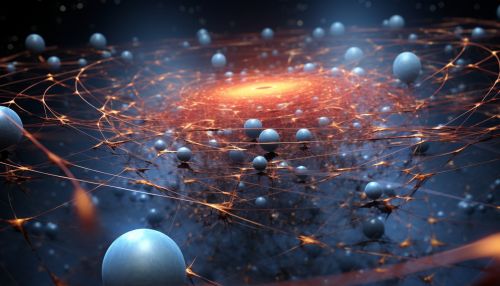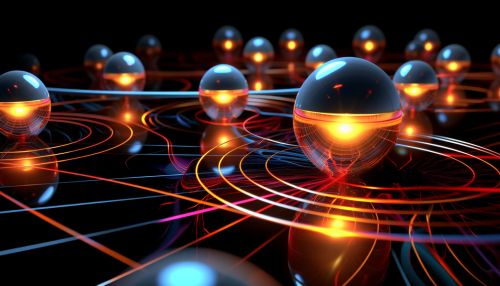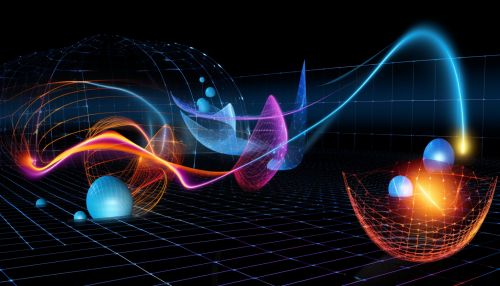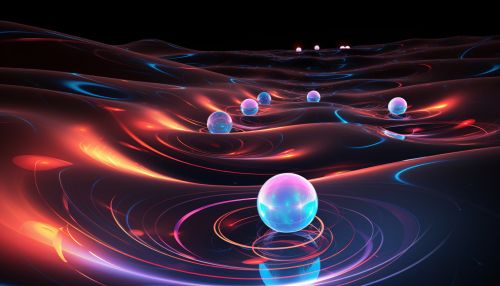The Physics of Quantum Mechanics in Quantum Simulations
Introduction
Quantum mechanics is a fundamental theory in physics that provides a description of the physical properties of nature at the scale of atoms and subatomic particles. It is the foundation of all quantum physics including quantum chemistry, quantum field theory, quantum technology, and quantum information science. Quantum simulations, on the other hand, are a subfield of quantum computing that focuses on using quantum computers to simulate quantum systems. This article will delve into the physics of quantum mechanics in quantum simulations.
Quantum Mechanics
Quantum mechanics is a branch of physics that deals with phenomena on a very small scale, such as molecules, atoms, and subatomic particles like electrons, protons, and neutrons. It is a fundamental theory in physics that describes how these particles behave and interact with each other. Quantum mechanics is known for its challenging concepts and counter-intuitive predictions that differ significantly from classical physics.


The principles of quantum mechanics include wave-particle duality, uncertainty principle, superposition, and entanglement. Wave-particle duality is the concept that all particles exhibit both wave and particle properties. The uncertainty principle, proposed by Werner Heisenberg, states that the position and momentum of a particle cannot be simultaneously measured with arbitrarily high precision. Superposition is the ability of a quantum system to be in multiple states at the same time until it is measured. Quantum entanglement is a physical phenomenon that occurs when pairs or groups of particles interact in ways such that the quantum state of each particle cannot be described independently of the others.
Quantum Simulations
Quantum simulations are a powerful tool in quantum physics, allowing scientists to study the behavior of quantum systems that are difficult to investigate experimentally. They are a subfield of quantum computing that focuses on using quantum computers to simulate quantum systems. Quantum simulations can be used to model systems in quantum mechanics, quantum field theory, quantum chemistry, and other areas of physics.


Quantum simulations can be divided into two types: digital quantum simulations and analog quantum simulations. Digital quantum simulations use quantum gates to simulate the dynamics of a quantum system, while analog quantum simulations use quantum systems to emulate other quantum systems. Both types of quantum simulations have their advantages and challenges, and the choice between them depends on the specific requirements of the simulation.
Physics of Quantum Mechanics in Quantum Simulations
The physics of quantum mechanics plays a crucial role in quantum simulations. Quantum simulations use the principles of quantum mechanics to simulate quantum systems, and the accuracy of these simulations depends on the correct implementation of these principles.


One of the key principles used in quantum simulations is superposition. In a quantum simulation, the quantum computer uses superposition to represent multiple states of the quantum system at the same time. This allows the quantum simulation to explore a large number of possibilities simultaneously, making it much more efficient than classical simulations.
Another important principle is entanglement. Quantum simulations use entanglement to create correlations between different parts of the quantum system. This allows the quantum simulation to accurately represent the complex interactions that occur in quantum systems.
Applications of Quantum Simulations
Quantum simulations have a wide range of applications in various fields of science and technology. They can be used to study the properties of materials, the behavior of quantum systems, and the dynamics of quantum processes. They can also be used to design new materials and drugs, to optimize quantum algorithms, and to solve complex problems in physics, chemistry, and biology.


In material science, quantum simulations can be used to predict the properties of materials and to design new materials with desired properties. In quantum chemistry, quantum simulations can be used to calculate the electronic structure of molecules and to predict the outcomes of chemical reactions. In quantum information science, quantum simulations can be used to develop and optimize quantum algorithms and protocols.
Challenges and Future Directions
Despite the significant progress in quantum simulations, there are still many challenges to overcome. One of the main challenges is the issue of quantum decoherence, which is the loss of quantum information due to interactions with the environment. This limits the size and complexity of the quantum systems that can be simulated.


Another challenge is the need for more efficient quantum algorithms. Current quantum algorithms require a large number of quantum gates, which increases the risk of errors. Developing more efficient algorithms will allow for more accurate and reliable quantum simulations.
Looking forward, the field of quantum simulations is expected to continue to grow and evolve. With the development of more powerful quantum computers and more efficient quantum algorithms, quantum simulations will become an increasingly important tool in science and technology.
